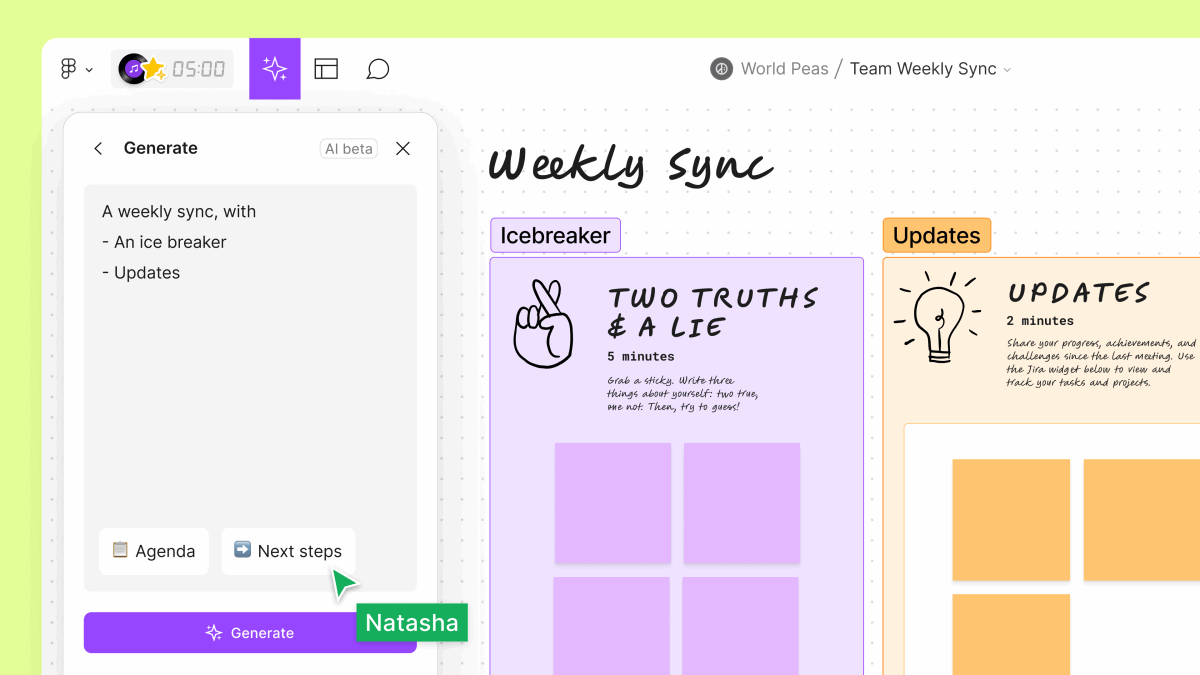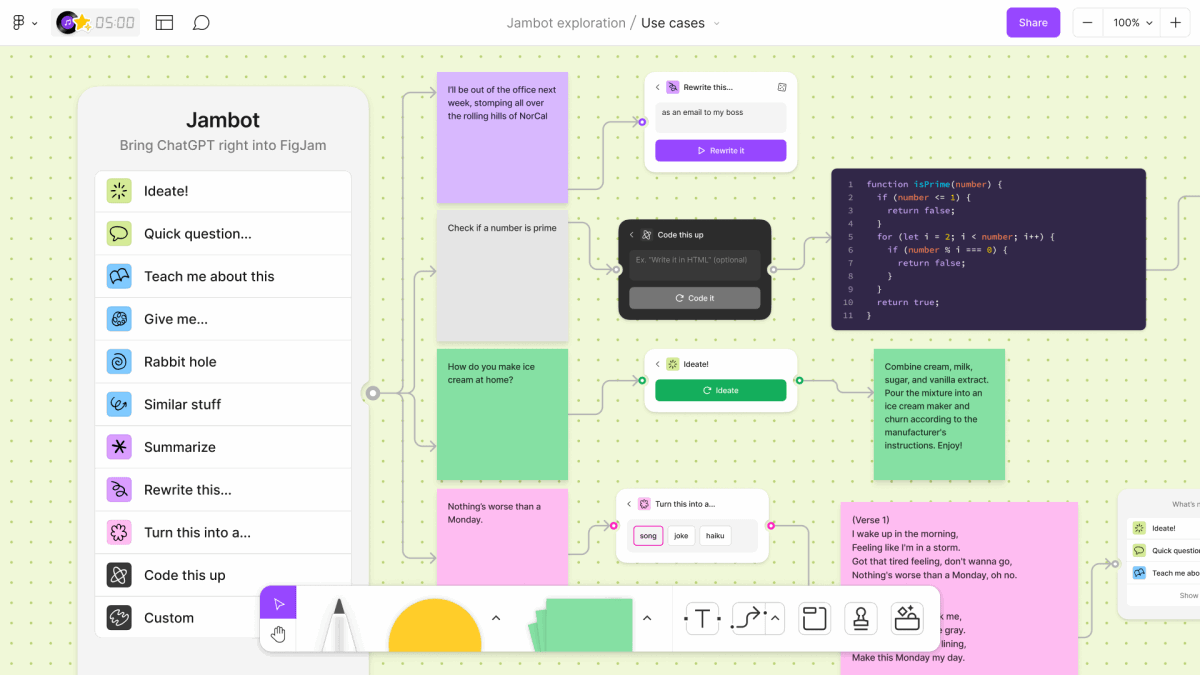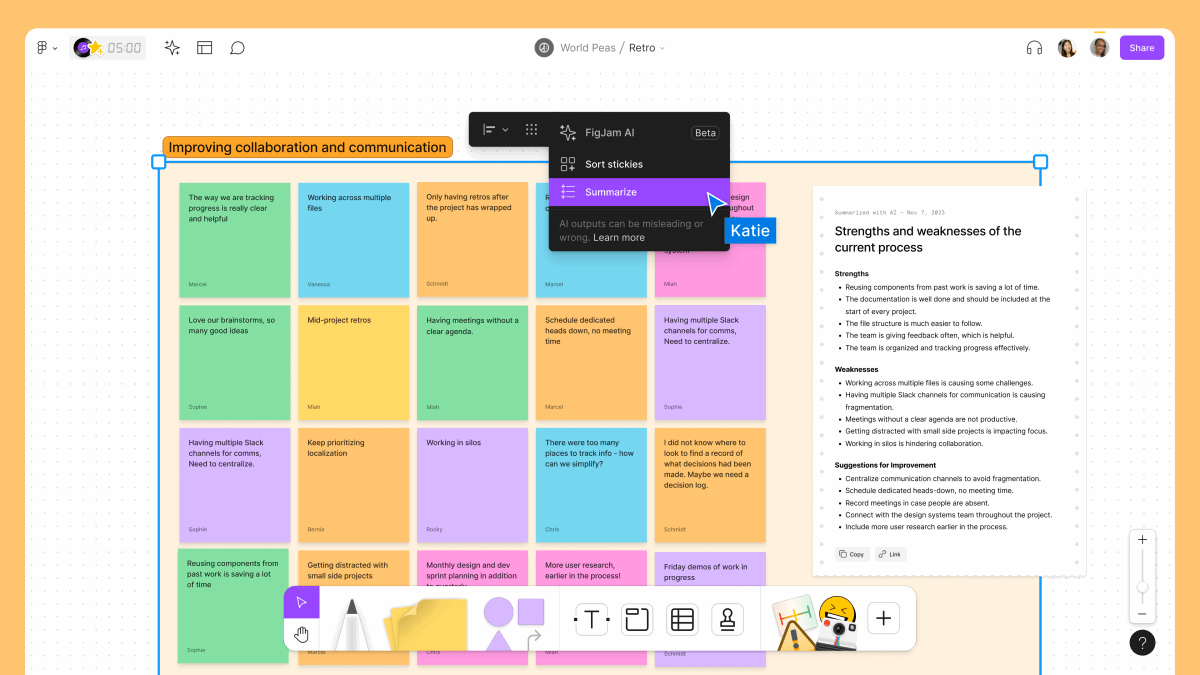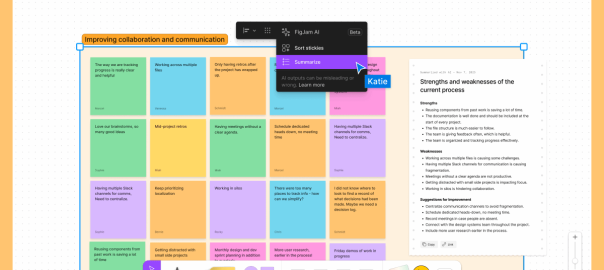Design software companies like to make big promises about the creative potential of their AI tools. With its new AI features, Figma is making one of the most enticing promises of all: It’s going to make your meetings better.
Today, the collaborative design software company announced FigJam AI, its first native AI product. The AI-assisted digital whiteboard runs on technology from OpenAI and can be used to make everything from meeting agendas to org charts to flow charts, based on simple prompts. The AI interface appears as an icon that looks like a sparkle effect, and it opens a widget that users type into ChatGPT-style or as options to sort and summarize.

It’s a relatively restrained AI offering compared to other design software, but it solves problems Figma saw with the user experience of its digital whiteboard. Pandemic remote work changed how teams used Figma as users adapted its infinite canvas for things like games or icebreakers to make meetings more fun. While FigJam provides a digital space to run more engaging remote meetings than Zoom or Slack could on their own, setting them up could be time consuming, and some users didn’t know where to start. Two-thirds of Figma’s daily active users are non-designers, so making FigJam AI easily comprehensible across a range of user types was critical.
“When you’re starting with a blank file it can feel really intimidating to know how to fill it up,” says Jenny Wen, a Figma design manager. “You might not feel like you’re a visual thinker because you know, not everybody’s a designer, and that’s totally okay.”
FigJam AI can auto-generate calendars, gantt charts, or even suggest possible agenda items based on users’ prompts. It also solves a problem users had after particularly expansive or cluttered brainstorm sessions. How do you sum it all up? FigJam AI’s sort and summarize functions are built to do that for you.

“There’s a lot of brainstorming that can happen in FigJam, which is really amazing, but the feeling was that it can feel really messy afterwards,” says Yuhki Yamashita, Figma CPO. “How do you know what actually happened in the brainstorm? How do you really turn those into next steps?”
Figma’s AI strategy is focused not on design, per se, but productivity, which speaks to its role in corporate workflows as a place where designers communicate with members of other teams. The company says the ratio of product teams that use its software are about seven developers to one designer.

In June, the company acquired Diagram, an AI design tool maker founded by Jordan Singer, who built a plugin on Figma to generate design ideas using GPT-3. Singer and the Diagram team were involved in the vision, design, and development of FigJam AI, the company says. While Adobe and Canva promote AI tools that generate more realistic images or iterate on existing designs, FigJam AI is meant to be a helper for middle managers and others to save time and eliminate the busy work.
As is fitting a collaborative software provider, the company has integrated its product with other productivity and meeting software, including Microsoft Teams, Zoom, and Google Meet. And though Figma’s $20 billion acquisition by Adobe has stalled due to regulatory delays, Figma is showing what integration could look like with at least some programs. The company released a video late last month that showed a screen view of a team working between Figma and Firefly, Adobe’s AI generation engine, to show how the programs together could turn a storyboard script into images and update product images live with artificially generated backgrounds without leaving the canvas.
The low barrier to entry to participate in meetings is a key differentiator that sets Figma apart from its competitors, Yamashita says. Cursors labeled with people’s names can react with emotes like flames and thumbs up, “lightweight ways to show, hey, I like this idea,” and users’ chats show up on screen on their cursor. “I think that’s kind of enabled people to be more creative in work environments,” he says.
(5)




